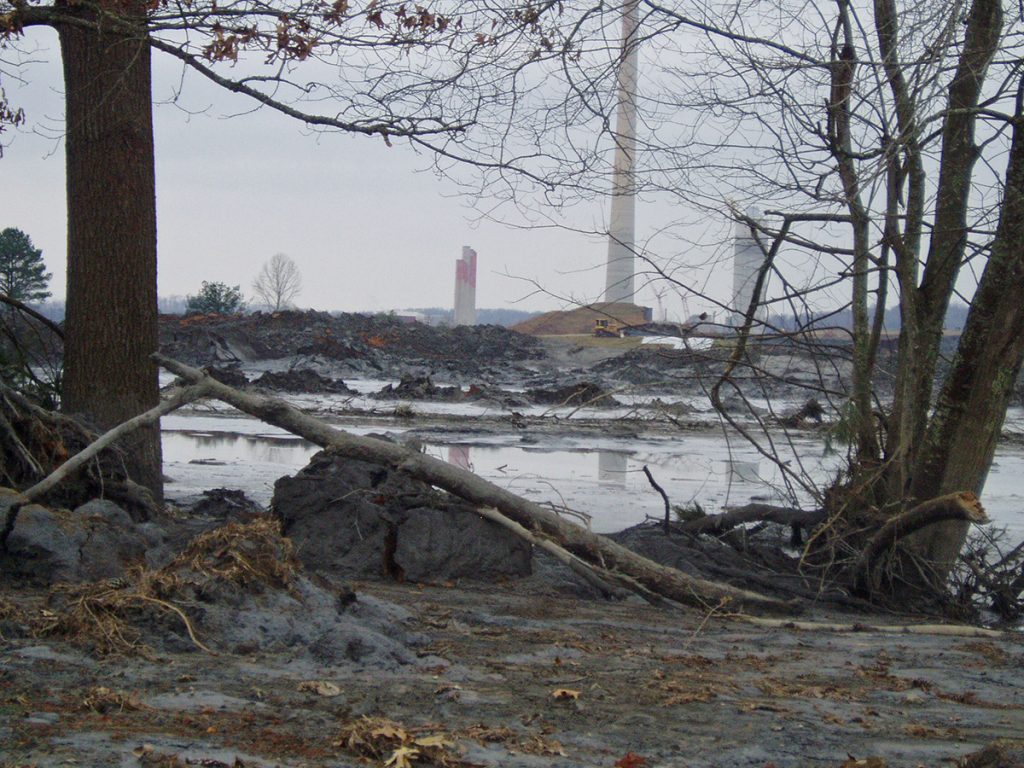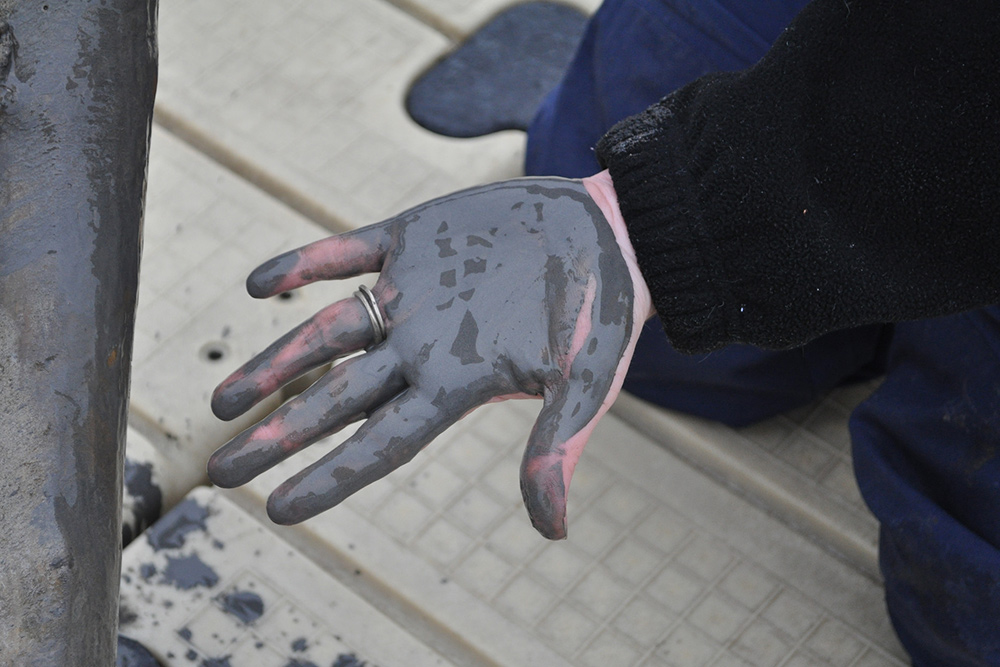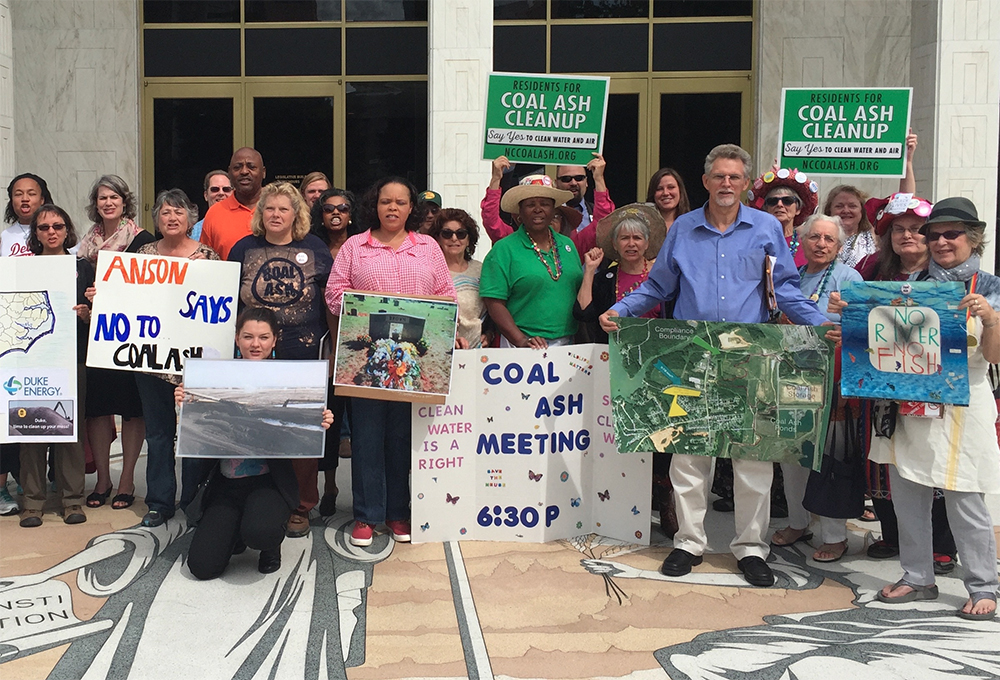Cleaning Up Coal Ash
For well over a century, power plants across the country have burned coal to generate electricity. And for just as long, leftover coal ash has been dumped in open, unlined pits near the power plant, usually located on a river or lake. Every year, U.S. power plants produce 130 million tons of coal ash, which is the second largest waste stream in the country after municipal garbage.
Coal ash concentrates the toxic heavy metals found in coal, including arsenic, mercury, lead and selenium. Stored in unlined, wet impoundments, coal ash has been leaking these toxics into our groundwater and surface waters for years. Sometimes these impoundments collapse — with disastrous results.
Yet government regulations for coal ash management are either non-existent or sparse, and there is little enforcement of the regulations that do exist. In North Carolina, this lack of oversight — and the complicity between state regulators, elected officials and Duke Energy — came to a boiling point in February 2014 when one of Duke’s coal ash impoundments spilled 39 million tons of ash into the Dan River.
Citizens living near North Carolina’s 33 coal ash impoundments — all of which have leaked — have fought for transparency from Duke and the state, and for cleanup of the pollution that threatens their property value, health and family. Their actions forced this issue into the headlines of news networks and to the forefront of environmental justice conversations in the United States.
Appalachian Voices stood with these communities as we worked for years to compel Duke Energy and the N.C. Department of Environmental Quality to excavate coal ash from all the North Carolina sites and dispose of it either in lined, dry landfills, away from waterways, or by recycling it for concrete or other uses, provided it’s done in a manner that protects public health and the environment.
On Jan. 2, 2020, North Carolina announced a historic settlement with one of the state’s most powerful corporations and polluters, Duke Energy. The settlement requires Duke to move nearly 80 million tons of toxic coal ash at six of its power plants to properly lined landfills onsite or recycle it.

Learn information about specific coal ash impoundments in the South, including health threats and safety ratings:
Additional Resources
Fact sheets, videos, links to academic research, and more
Sign Up to Act
Help us protect the health of our communities and waterways.
Latest News
Forest Fugitives
Wanted: Six invasive species accussed of trespassing on American soil and robbing her of her natural resources.
Petition Focuses on Va. Regulatory Failures
Appalachian Voices recently joined the Sierra Club, Southern Appalachian Mountain Stewards and Appalachian Mountain Advocates to file a formal petition with the U.S. Environmental Protection Agency alleging that a Virginia agency had failed to comply with requirements of the Clean Water Act since 2011.
Atlantic Coast Pipeline Proposal Advances
Duke Energy, Dominion Resources and other partners are teaming up to build a 550-mile pipeline to better access natural gas produced in Pennsylvania, Ohio and West Virginia, where fracking has proliferated in the Marcellus and Utica shale formations.
Energy Savings Advances in Tennessee and North Carolina
This September in Tennessee, Appalachian Voices participated in an energy efficiency “retreat” that brought the Tennessee Electric Cooperative Association and six of its member cooperatives together with a number of state agencies and numerous experts in energy efficiency finance.
North Carolinians React to Proposed Fracking Rules
The N.C. Mining and Energy Commission held public hearings in August and September on the proposed rules it has put forth to regulate fracking in the state. At each of the four hearings held across the state, North Carolinians overwhelmingly expressed concerns with the rules’ shortcomings and the state’s rush to begin fracking.
Gainesville Commission Votes to End Mountaintop Removal Coal Purchases
On Sept. 18, city commissioners in Gainesville, Fla., voted 5-2 for a policy that could end the local power plant’s purchases of Appalachian coal mined by mountaintop removal, and they unanimously adopted a resolution opposing the destructive practice. The move makes Gainesville the first city with a municipal utility to adopt such a policy.






